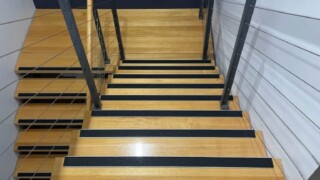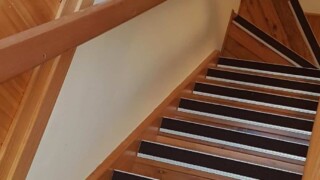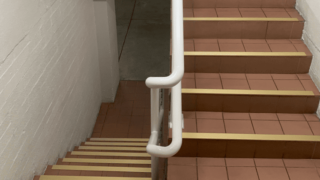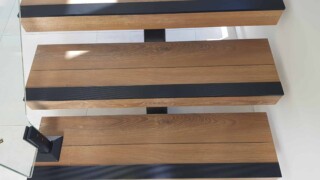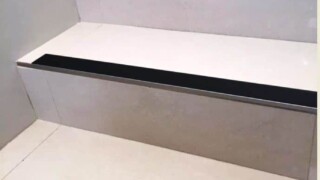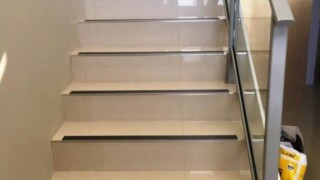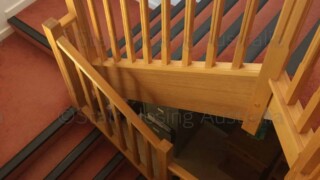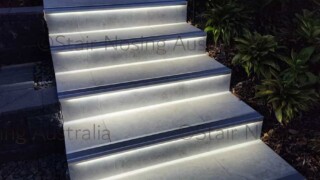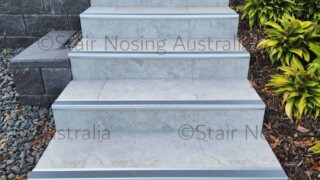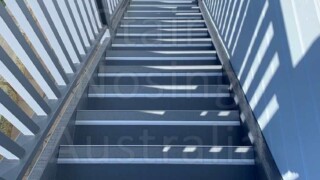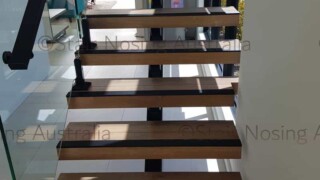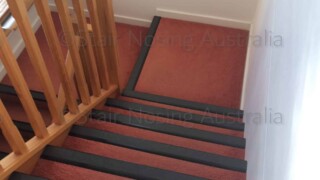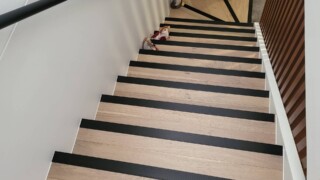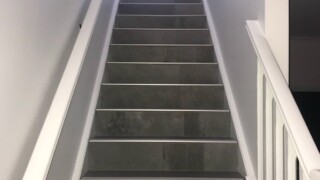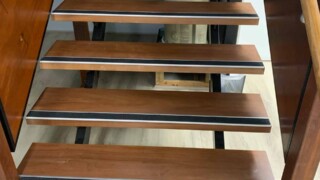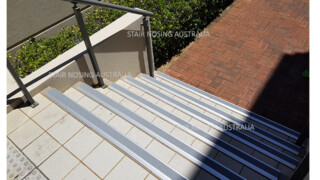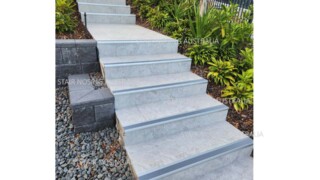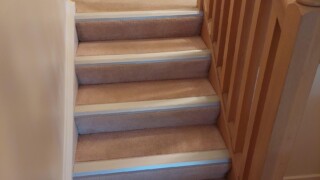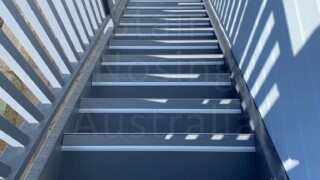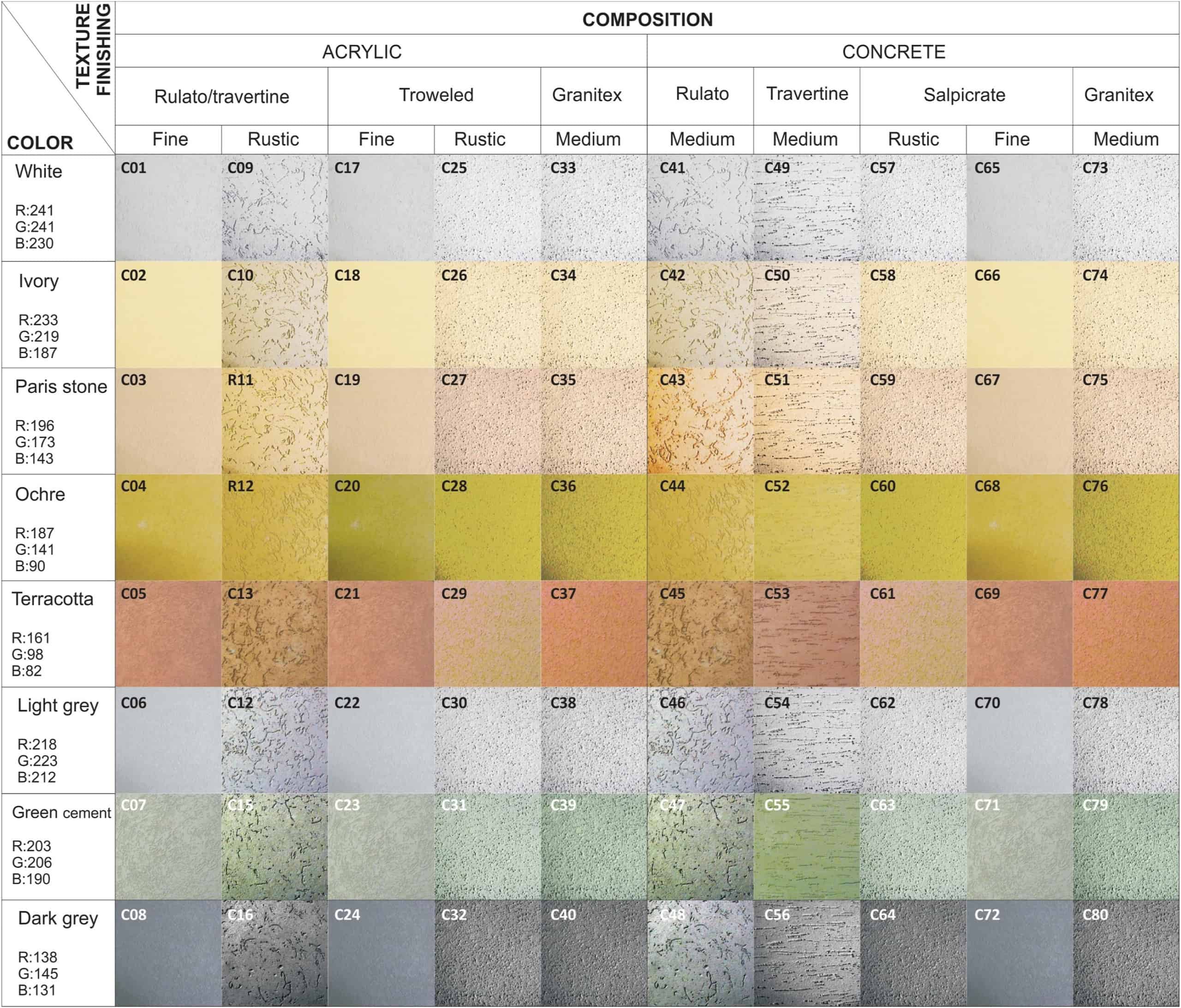Residential Stair Nosing
If you are the owner of the property and it is your home, then you do not require stair nosing. It is a personal choice.
If you are a developer of residential apartments then yes, you do need to have stair nosing on steps. If you run a BNB you do require stair nosing.
If your building has public access you must have stair nosing and tactiles to comply with Building Codes of Australia (BCA) regulations in relation to the AS1428 2021 Design for Access and Mobility.
Most people who are looking for residential stair nosing for their steps are looking to cover external steps or internal steps. Generally speaking these steps are usually installed on hard surfaces, such as ceramics, wood or concrete.
In addition some customers have installed vinyl plank or wood on their steps and require a nosing for visual contrast and safety.
It is so important to highlight the edge of a step.
Our stair nosing range offers several stair nosings which are less industrial and commercial looking. These nosings are often favoured by our customers.

The gallery below shows you our stair nosing range.
All of our nosings come in a variety of colours and several different types and colours of inserts.
You can mix and match to get the right fit for your residential stair nosing.
Some people get confused over the terms a stair nosing and a stair strip.
A stair nosing has a “nose” on it which comes down the face or riser of the step.
A stair strip is generally a non slip strip that sits on top of the step. There are rules with installing both.
With a stair strip it must be larger than 50mm wide, and it cannot be set back more than 15 mm from the step edge.
Stair nosing are installed on the edge of the steps. The difference between a strip and a nosing is that the nosing has a nose or a turn down on the edge of the step.
These provide a visual cue and define each step. Most stair nosing have inserts with a high slip resistance.
In construction, a substrate is the material or surface that serves as the foundation for other materials. It acts as the base for various applications, such as a building’s foundation, flooring material, or the surface for paint or coating.
When you install stair nosing, you work with the substrate as your surface. This choice is crucial because it affects both your selection of the right type of stair nosing and your determination of the best installation method.
Furthermore, you can install some stair nosing options using strong adhesives like T-Rex or High Tack Fix All by Soudal. In addition to this, many stair nosings also allow for mechanical fixing, meaning you can drill, plug, and screw them in place. If, however, you are installing onto wood, you only need to use wood screws.
Examples
- Concrete
- Galvanised steel
- Tiles
- Wood
- Rubber
- Carpet
What about using galvanized steel for stair nosing treads on egress stairs?
While the Building Code of Australia (BCA) 2022 doesn’t provide a specific section for “Light Reflectance Value” (LRV) related to galvanized steel, it does set standards for LRV and luminance contrast to help people with visual impairments. For example, the code requires stair nosings to achieve at least a 30% luminance contrast with the floor, which is essential for accessibility.
Additionally, galvanized steel has a typical dull gray appearance and reflects limited light, usually falling between 20 and 30 on the LRV scale. Specifically, its LRV can range from about 0.35 to 0.6, meaning it reflects some light but doesn’t shine as bright as white paint. Furthermore, batch galvanizing, which many builders use because of its durability, often results in a slightly lower LRV compared to continuous galvanizing, which tends to have a smoother and more even finish.
To achieve that 30% contrast against the estimated LRV of zinc-coated galvanized steel (35-60), the stair nosing must reflect between 4% and 25% of light. For reference, yellow fiberglass-reinforced plastic (FRP) typically reflects around 50% of light, making it a good option to consider.
I am text block. Click edit button to change this text. Lorem ipsum dolor sit amet, consectetur adipiscing elit. Ut elit tellus, luctus nec ullamcorper mattis, pulvinar dapibus leo.


